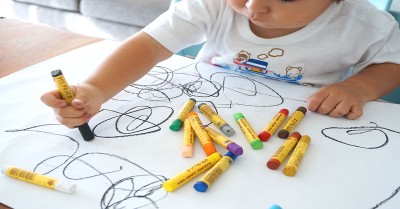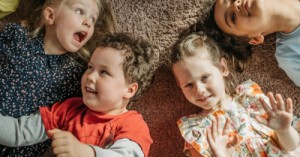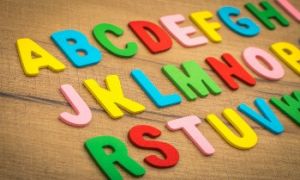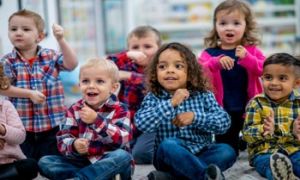Belonging, Being and Becoming: The Early Years Learning Framework for Australia embeds art in many significant ways to foster the holistic development of children. Here are the main curriculum connections of art in the early childhood learning framework.
Learning Outcome 1 – Children Have A Strong Sense Of Identity
Art helps children to develop their selfhood in significant ways. When they engage in process-focused art, they are able to exercise choice in what materials they want to play, with and how and when. This meets Learning Outcome 1.2 Children develop their emerging autonomy, inter-dependence, resilience and sense of agency.
Children use art to express their imagination and interests. Through their creations, children construct meaning in many different ways which in turn connects to Learning Outcome 1.3 – Children develop knowledgeable and confident self-identities.
Learning Outcome 2 Children Are Connected With And Contribute To Their World
By showing that there is no one way to create art or no right and wrong ways to do it, children learn open-mindedness and a flexible mindset. Indeed encouraging children to adopt unusual visual perspectives – like looking at the world from under the table or upside down – could help them be more accepting of different ways of thinking and being, thereby developing greater respect for difference and cultural competence, thus connecting with Learning outcome 2.2 – Children respond to diversity with respect.
Learning Outcome 3 - Children Have A Strong Sense of Well-being
By allowing free expression, art promotes mental health and well-being in children. Giving your learners a creative outlet can help relieve stress and work through things happening in their lives, thus building a connection with Learning outcome 3.1 – Children become strong in their social and emotional wellbeing. As children watch and talk to each other in the process of creating art, they also pick up sophisticated social skills such as sharing and cooperation which has positive outcomes in other areas of school and home life.
Additionally, art helps children with physical development. As they hold crayons, and paintbrushes and play with colour, they learn to use their fingers in different ways. This builds fine motor skills as well as visual-motor coordination in children which in turn are necessary for executive functioning and tasks that require controlled movements. All this helps meet Learning outcomes 3.2 - Children take increasing responsibility for their own health and physical wellbeing
Learning Outcome 4 – Children are confident and involved learners
When children create art, they not only use their creative imaginations to explore ideas and materials but also collaborate with peers and use problem-solving skills – for example when determining how they can paint the outline of flower petals – by using a fine-tipped brush. What’re more these underlying processes can then be applied across all aspects of the curriculum. Art thus helps children to meet Learning Outcome 4.1 – Children develop dispositions for learning such as curiosity, cooperation, confidence, creativity, commitment, enthusiasm, persistence, imagination and reflexivity.
When they further use the processes, reflections and investigations of art to solve problems in other areas – like after painting with cork, using the material to build bridges in a science project, they are connecting to Learning outcome 4.3 Children transfer and adapt what they have learned from one context to another.
Additionally, as children explore the purpose and function of a range of tools and materials to create art or as they manipulate resources to investigate, take apart and invent, they are also engaging in Learning Outcome 4.4 Children resource their own learning through connecting with people, place, technologies and natural and processed materials
Learning Outcome 5 - Children Are Effective Communicators
This area of learning outcomes provides particularly rich opportunities for artistic expression. Art is one of the earliest forms of communication, developing even before children have learnt to use language. Through their scribbles, lines and eventually shapes and colours, children express their perception of their surrounding world, including the most important people in their lives. This function of art connects to Learning Outcome 5.3 - Children express ideas and make meaning using a range of media. Educators can foster the process by making accessible a wide range of media and materials both two and three-dimensional for children to use and explore, including paint, glue, scissors, tape, paper, boxes, collage materials, twigs, wool, crepe paper. Items should be open-ended so children can use them in a variety of ways. Also, more of natural materials like leaves, nuts, bark, sticks, pine cones and pebbles as well as elements like water, sand, clay should be incorporated to give children the widest possible resources to express their ideas.
The various stages of art development are all about how children learn to use lines, shapes, colours and other artistic elements as symbols. From the scribbling, through pre-schematic and then schematic phases, they develop an understanding that symbols – like certain shapes and certain arrangements of shapes on paper – are a powerful means of communication and that ideas, thoughts and concepts can be represented through them. This directly connects to Learning outcome 5.4 – Children begin to understand how symbols and pattern systems work.
Equally importantly the symbolic aspect of art prepares children for the development of writing skills. Between one and three years, children tend to scribble vertical, horizontal, diagonal, circular, curving and wavy lines. As they get better at scribbling, they also start drawing dots, ovals, circles as well as basic triangles. All these rudimentary lines and shapes prepare children to get children ready to write.
Educators can respond to children’s engagement with visual symbols by talking about the elements, principles, skills and techniques they have used in order to convey meaning. This can eventually be extended to discussions on symbol systems, for example, letters, numbers, time, money and musical notation. Educators can also use children’s artwork to draw children’s attention to symbols and patterns in their environment since research shows that by the age of three, children are inherently drawn to fractal shapes made by leafs, petals, pebbles and the outlines of hills. All these measures help children to use art to communicate their understanding of the world around them and their place in it.
The purpose of art experiences is to allow children to explore on their own, using materials in their own ways. This enables the children to learn that their own abilities are valued and children will begin to freely participate in the creation of art. Art is a great tool to use to promote children's learning.
Benefits Of Art and Craft
Art with its many sensory experiences has been found to aid brain development by increasing the number of neural pathways, especially in early childhood.
Art With Babies and Toddlers
There are two main approaches to using art in learning – art as a product and art as a process. The following will help you to understand the difference between the process and product art and which you may use in your learning environment.
Process Art VS Product Art
Art is a sensory experience it's about the process of exploration - celebrate a child's artistic journeys for not just their ability to create but also their willingness to try out something new.
References:
Painting With Young Children In Early Years, ACECQA
The Perfect Play Space. ACECQA
Study Finds 3-Year-Olds Prefer Natures Fractal Patterns, Uoregon
The Arts In Early Childhood, Americans For The Arts







 Here is the list of the EYLF Learning Outcomes that you can use as a guide or reference for your documentation and planning. The EYLF
Here is the list of the EYLF Learning Outcomes that you can use as a guide or reference for your documentation and planning. The EYLF The EYLF is a guide which consists of Principles, Practices and 5 main Learning Outcomes along with each of their sub outcomes, based on identity,
The EYLF is a guide which consists of Principles, Practices and 5 main Learning Outcomes along with each of their sub outcomes, based on identity, This is a guide on How to Write a Learning Story. It provides information on What Is A Learning Story, Writing A Learning Story, Sample
This is a guide on How to Write a Learning Story. It provides information on What Is A Learning Story, Writing A Learning Story, Sample One of the most important types of documentation methods that educators needs to be familiar with are “observations”. Observations are crucial for all early childhood
One of the most important types of documentation methods that educators needs to be familiar with are “observations”. Observations are crucial for all early childhood To support children achieve learning outcomes from the EYLF Framework, the following list gives educators examples of how to promote children's learning in each individual
To support children achieve learning outcomes from the EYLF Framework, the following list gives educators examples of how to promote children's learning in each individual Reflective practice is learning from everyday situations and issues and concerns that arise which form part of our daily routine while working in an early
Reflective practice is learning from everyday situations and issues and concerns that arise which form part of our daily routine while working in an early Within Australia, Programming and Planning is reflected and supported by the Early Years Learning Framework. Educators within early childhood settings, use the EYLF to guide
Within Australia, Programming and Planning is reflected and supported by the Early Years Learning Framework. Educators within early childhood settings, use the EYLF to guide When observing children, it's important that we use a range of different observation methods from running records, learning stories to photographs and work samples. Using
When observing children, it's important that we use a range of different observation methods from running records, learning stories to photographs and work samples. Using This is a guide for educators on what to observe under each sub learning outcome from the EYLF Framework, when a child is engaged in
This is a guide for educators on what to observe under each sub learning outcome from the EYLF Framework, when a child is engaged in The Early Years Learning Framework describes the curriculum as “all the interactions, experiences, activities, routines and events, planned and unplanned, that occur in an environment
The Early Years Learning Framework describes the curriculum as “all the interactions, experiences, activities, routines and events, planned and unplanned, that occur in an environment


